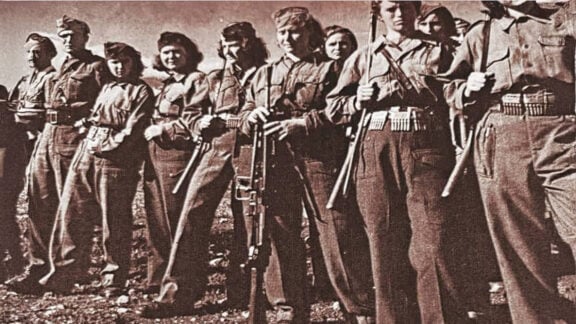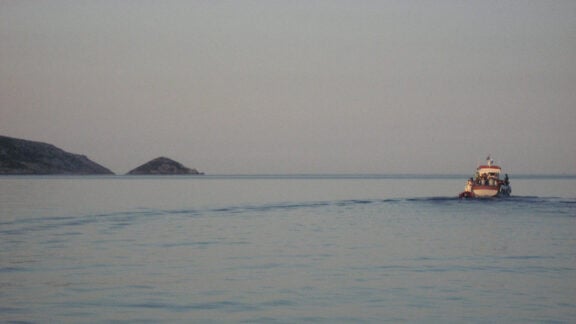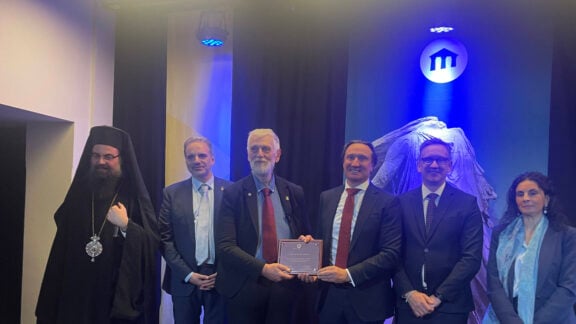Drenched in history, culture, green landscapes and crystal clear beaches, the all-time favourite city of Nafplion has just been voted as the best city in Greece according to Culture Trip, an online media start-up with nearly nine million monthly readers, and global offices in London, New York, and Tel Aviv.
Set in one of Greece’s most diverse and vibrant regions, the Peloponnese, the historical seaside town of Nafplion, near the north end of the Argolic Gulf, is the perfect destination for those who wish to experience traditional Greek life, immerse themselves in Greek history, and relax among splendid virgin landscapes and centuries-old traditional villages.
“Nafplion has always been a popular town, so much so that the newly liberated Greek Kingdom of 1823 chose it as the country’s first capital and it remained so for some 11 years,” says travel researcher, author and photographer Paul Hellander, in an interview with Neos Kosmos.
According to mythology, the town was founded by Náfplios, the son of Poseidon and Danaida, and its history traces back to ancient times when soldiers from the region participated in the Argonautic expedition and the Trojan War.
The town declined during Roman times and flourished again during the Byzantine era.
Frankish, Venetian, and Turkish conquerors also left their mark on Nafplion’s culture, architecture and traditions throughout the centuries.
Divided into the medieval and the new town, Greece’s first capital city has known tourism since early last century.

Unlike the seasonally-driven, incredibly popular Greek islands, elegant and enticing Nafplion is a prosperous city of 40,000 permanent inhabitants and has a tourist industry that never sleeps.
“Nafplion was, is and will always be a favourite destination for most.
“It was popular when I first visited in 1973 and was still popular in recent years. Its enduring popularity however is hard to pin down to any one fact or feature. It is an unprepossessing kind of place as visitors approach from Athens,” explains Hellander.
“The scruffy, low-lying coastal road is peppered with cement constructed shops and houses – just like any typical Greek town – and the neglected pavements and public areas leading to the heart of the town certainly do not prepare the visitor for the surprise that awaits.”
Ancient walls, medieval castles, monuments and statues, Ottoman fountains, Venetian and neoclassical buildings mesmerise the visitor with their unique architecture and beauty.
Towering with an impressive view of the Argolic Gulf, the Palamidi Castle, east of Acronafplia, remains the symbol of the city, standing proud at 216m above sea level.
Visitors that choose to climb all of its 999 steps carved into rock, vouch that the view from above is more than rewarding.
“It’s not until visitors reach the meeting of most roads by the corner of the vast harbour that Old Nafplion reveals itself to them; the core of what Nafplion is about and the source of its enduring popularity.”
The striking, rocky hill called Palamidi rises like an emperor over the red-tiled roofs of the old quarter. A town with a hill and a fortress on it is bound to impress.
“As visitors cast their eyes out to sea, they inevitably spot another fortress sitting ‘twixt the sprawling arms of the harbour wall: Bourtzi,” says Hellander.

Drenched in history, the town is also incredibly picturesque and renowned as one of the most romantic places in Greece.
At sunset, couples, families and children stroll around the charming bay area enjoying views of the lighthouse, fishing boats, and the beautifully lit Palamidi fortress, standing on a rocky islet in the middle of the harbour.
“On our very recent stay in Nafplion we experienced a beautiful way of Greek life,” says Greek Australian Joanna Atsikbasis who visited the town last month.
“We stayed in the old city where the multicoloured old character homes layered on a hill were as picturesque as any we’ve seen. The small cobblestone streets with shops and restaurants lining the way all led to the plateies which were full of people sitting in tavernas and cafeterias, dining and drinking, while children ran about and played happily.”
A romantic stroll along Arvanitia Promenade, the town’s pedestrianised seaside road, leads to secluded sandy beaches and the infamous church of Panagitsa, known as the Santa Maria della Grotta, which served as the town’s secret school during Ottoman rule, and offers an uninterrupted view of the Argolic Gulf.
According to locals, Panagitsa is the perfect place to exchange vows of eternal love.
“One of my favourite things was walking down the streets which cascaded with jasmine and bougainvillea flowers. The scent and colour against white walls was typically Greece without the hustle and bustle of other more touristic places. Part of Nafplion’s mainland definitely had an island feel and the beaches were so lovely, with waters so clear you could see all the way down to the sand beds,” Joanna recalls.

A less obvious feature of Nafplion are the town’s wonderful museums which have plenty to offer to those who wish to immerse themselves in art and history.
Nafplion can also be used as a springboard for excursions to the northern towns of Mycenae and Nemea, where the great archaeological sites of the northern Peloponnese stand proudly, as well as the infamous ancient theatre of Epidavros a few miles further east.
The twisting labyrinthine streets, heritage buildings, multicoloured flower beds and a sophisticated atmosphere that’s a million miles from a typical tourist destination entice Athenians to flood the city on weekends and wander around the narrow alleyways among the cascades of bougainvillea, palm and pines trees, before making their way down to the beach.
“As you plunge into the warren of narrow streets, with fading and not-so-fading mansions, boutiques, subtly plush hotels, cafés restaurants and well-dressed people, you will realise that Nafplion is a classy gig: a Kolonaki by the sea, or a Glyfada with a fortress.
“Athenians like to come here. And so do people from all over Greece and indeed the world, to the point that the international community have voted Nafplion as perhaps the nicest place in Greece,” explains Hellander.
“Nafplion’s cachet as an ex-capital gives it the street credibility that the city of Kalamata or Volos will never have.
“A town next to the sea is always going to be a winner and the ying and yang mix of mountains and water give it an undefinable pleasant air; what folk with a cerebral bent might call ‘spirit of place’.
“Yes, Nafplion is most certainly a popular destination and rightly so,” concludes Hellander.
Paul Hellander is a travel researcher, author and photographer who specialises in Greece. Paul has contributed to Lonely Planet publications, Rough Guides, Insight guides, Berlitz publications, and Qantas inflight magazine. His photographs have appeared in many publications worldwide.









